Sir William Emerson (1843-1924), President of the British Institute of Architects, visited India in early1860s, for the first time. His works include:
- Victoria Memorial 1901
- Crawford Markets in Bombay (now Mumbai) in 1865
- All Saints Cathedral in Allahabad (1869-1893)
- Muir College in 1873
- Takhtsingji Hospital (1879 – 93) in princely state of Bhavnagar in Gujarat
- The Palace (1894 – 95), Bhavnagar in Gujarat
In this earlier works he experimented with medieval Gothic styles, similar to the manner of his teachers but the design of his other great work in Allahabad, Muir College in 1873, is more eclectic
During his stay in Bhavnagar, at the request of his patron, he introduced forms from Hindu architecture, such as corbelled arches.
All Saints Cathedral:
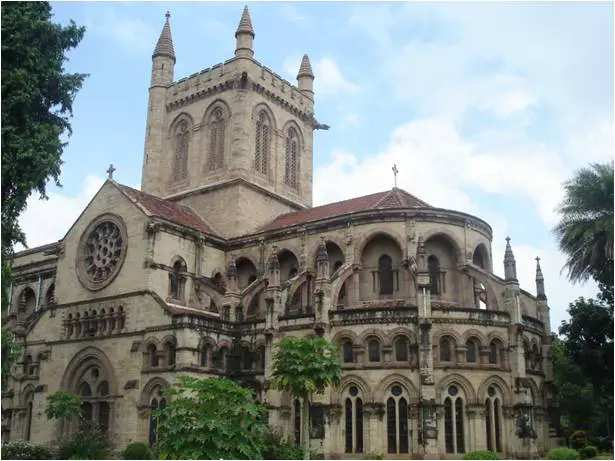
This magnificent cathedral, designed by Sir William Emerson in 1870 and Consecrated in 1887, is the finest of Anglican cathedral in Asia
Features :
- Faced in White stone with red stone dressing.
- The marble altar with intricate inlay and mosaic work.
- The stained glass work done in the 18th century.
- The stucco work on the roof and the exterior
Reflecting the life of Virgin Mary this work is similar to the art found in the churches of Goa.
The Exterior:
Buttresses
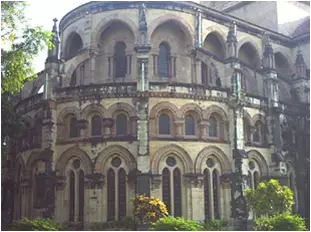
The Gargoyles
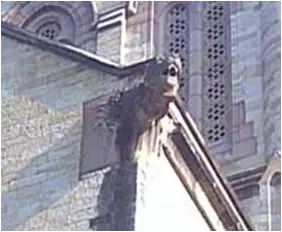
The West End with a rose window
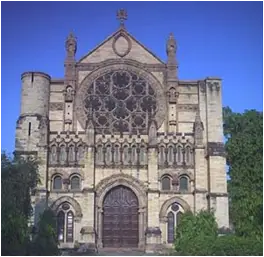
The Interior:
The Porch Door
Largest in the building through which you enter.
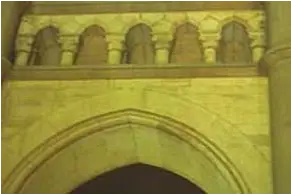
The stain glass window.
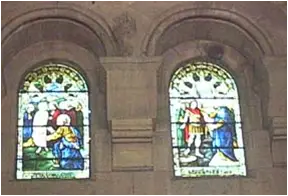
The Font
An excellent piece of workmanship in alabaster, was gifted by the children
of Allahabad
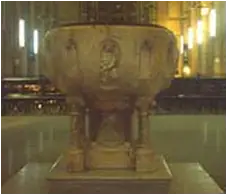
The Pulpit
Most striking feature
Made in alabaster
Has three panels carved
on it
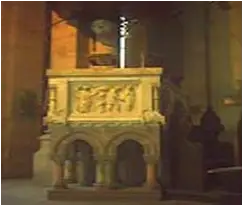
Crawford Market:
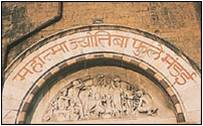
- It was designed by William Emerson in 1865 on the orders of Sir Arthur Crawford, the Municipal Commissioner
- The friezes on the outside entrance depicting Indian farmers, and the stone fountains inside, were designed by Lockwood Kipling, father of novelist Rudyard Kipling.
- The market covers an area of 22,471 sq m (24,000 sq ft) which 5,515 sq m (6,000 sq ft) is occupied by the building itself.
- The structure was built using coarse buff coloured Kurla stone, with redstone from Bassein.
- It has a 50 ft (15 m) high skylight awning designed to allow the sunlight light up the marketplace.
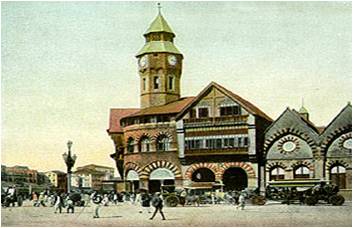
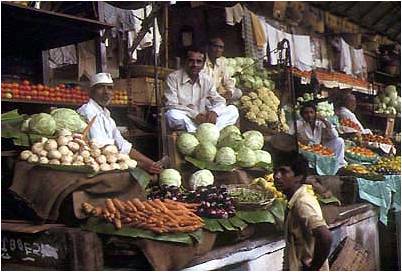
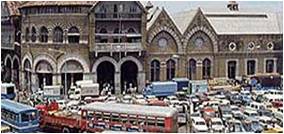
![[filefield-description]](https://www.archinomy.com/sites/default/files/case-studies/2011/crawford-market-6.jpg)
![[filefield-description]](https://www.archinomy.com/sites/default/files/case-studies/2011/crawford-market-5.jpg)
The Victoria Memorial:
![[filefield-description]](https://www.archinomy.com/sites/default/files/case-studies/2011/the-victorial-memorial-1.jpg)
It was built between 1906 and 1921. It is a majestic white marble building at the southern end of the Maidan and surrounded by a sprawling garden
It was built between 1906 and 1921. It is a majestic white marble building at the southern end of the Maidan and surrounded by a sprawling garden
![[filefield-description]](https://www.archinomy.com/sites/default/files/case-studies/2011/the-railing-at-the-front-gate.jpg)
The railing at the front gate.
![[filefield-description]](https://www.archinomy.com/sites/default/files/case-studies/2011/the-stone-fretwork-over-a-door.jpg)
The stone fretwork over a door
- The building was meant to be a museum in honor of queen Victoria. The patron, Lord Curzon did not want any Indian Elements in the architecture. The building was to stand as a staggering monument to the British Pride.
- In this context, the echo of the Taj Mahal need not have been an effect deliberately sought by the architect; but it is evident that Emerson greatly admired the Mughal masterpiece .
- Building has a pervasive Indian character that arises from-
- the material ; white marble brought from the same
- quarries in Makrana, Rajasthan, that supplied
- Shah Jahan.
- correspondence in the forms:
- the great dome, clustered with four subsidiary, octagonal domed chattris,
- the high portals,
- the terrace, and
- the domed corner towers
- There is even some correspondence in the function: like Shah Jahan, Curzon conceived the building as a memorial to an empress and as a powerful visual statement.
The Victoria Memorial:
![[filefield-description]](https://www.archinomy.com/wp-content/uploads/case-studies/2011/the-victorial-memorial-2.jpg)
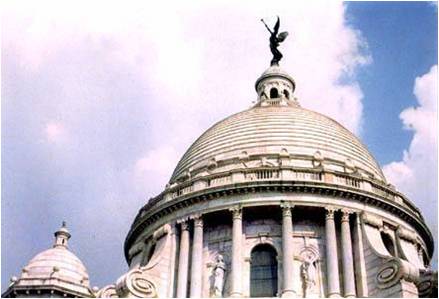
The Dome of the Memorial.
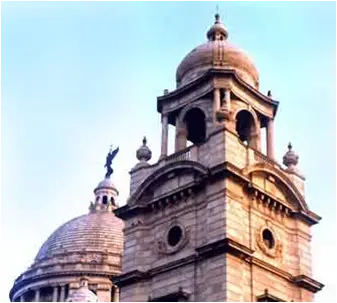
View of one of the minarets
- Based in England Emerson appointed an assistant-Vincent J. Esch , to supervise the construction of the building on site. Vincent Esch’s major contribution was the redesign of the foundations on innovative principles for which he was renowned.
- the Victoria Memorial houses a large bronze statue of the Queen Empress Topped with a moving angel this memorial faces the Calcutta Maidan.
- The statues of Motherhood, Prudence, Learning, Art, Justice, Architecture and Charity are brought from Italy.
- The magical lighting effect in the evening and a fairy tale ‘Fountain of Joy’ facing the memorial building create an atmosphere of unforgettable charm. It also has a 5 meter tall bronze winged figure of Victory, weighing 3 tons.
- The building is built on a solid plinth which also acts as the pile foundation for the building on the soft bed of the Hubli river. This gives it a height and the edifice rising over the vast flat garden that is the “maidan” is an impressive sight.
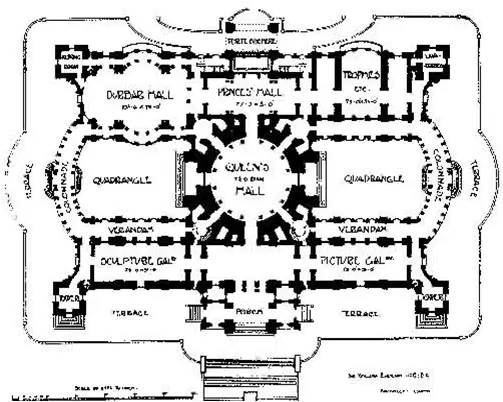
Plan
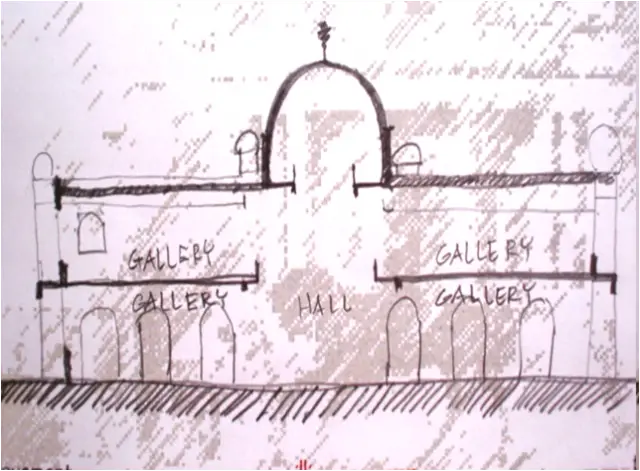
Section
Minar:
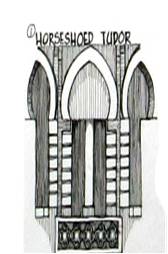
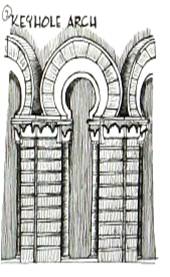
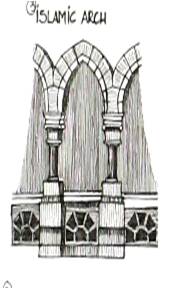
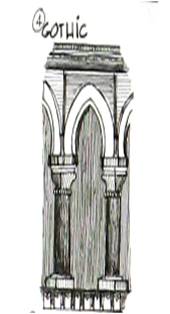
- 184ft high is accessible from the roof of the hall
- five levels, the topmost opening out onto a crenellated terrace with balconies at every stage projecting out,.
- At level one, an octagonal shaft with slightly horse shoed Tudor arches.
- The second level is a long octagonal shaft with a lesser lateral dimension and keyhole longish arches.
- This level has a balcony which projects out on a unique system of stalactite bracketing, which is very characteristic of the Indian Islamic architecture.
- a cluster of miniature arches, or small honey combed alcoves, with brackets in between.
- The taper gives it a marked upward impulse making a tower more stable and tall.
- Unique system of stalactite bracketing for the cantilevered balconies- characteristics of the Indian- Islamic character.
- The arch, essentially gothic in its geometry, austantiously ornamented with Islamic perforated jali.
- The jali are fitted in some places with Belgian glasses.
- The arcades have been horse-shoed slightly because the architect felt it would be dangerous in a large building with modern requirements to enter into close competition with the severe competition with the severe marble structures of Northern India
- Felt necessary to bring the details into harmony with the tower, an ornament which is not generally found in Indian Moslem architecture.
- Proximity of the new cathedral, with the style of which purely Indian Mohammedan architecture would not harmonize.
Dome and Ornamentation:

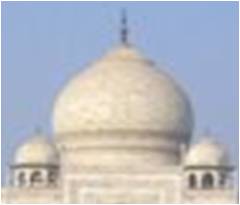
The dome and finial of the Taj
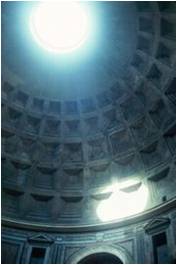
The oculus at the pantheon
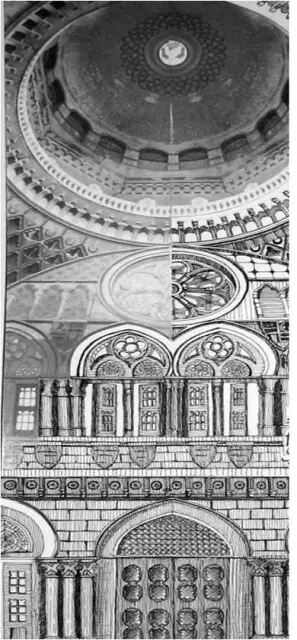
- Vizianagram Hall’s dome is Onion shaped also seen in the Taj Mahal’s dome.
- Its works on the dome, drum and pendentives system and is finished with a lantern instead of the finial of the Taj. A strong contrast to the conventional squich system of building.
- The Vizianagram hall named after the king of Vizianagram, who funded it..
- Eclectic mix.
- Ccolumn capitals from the Beejapore monuments are seen in the hall.
- Flooring pattern having a pictorial depiction of the sun and the solar system in the centre.
- Persian character heightened by the use of blue and white glazed multan tiles.
- Pendentive system used here is similar to the hagia Sophia in Istanbul.
- The oculus in the building is covered by a chattri, forming a lantern thereby giving the Islamic dome a gothic finish.
- The oculus in the building is covered by a chattri thereby giving the Islamic dome a Gothic finish.
- This feature is also seen in the Venetian Gothic architecture.
- The sun placed directly under the oculus is also the centre of the Vizianagram Hall.
Materials and Construction
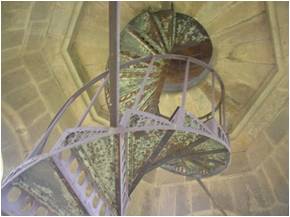
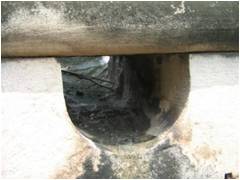
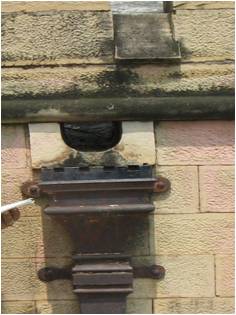
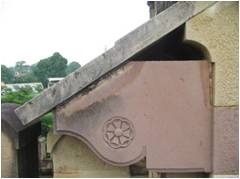
- Used iron girders with stone masonry.
- System of construction began in the European buildings built in the same time; architects considered it a brave attempt to use novel materials.
- The rainwater disposal systems in the building are well thought of and outlaid in detail.
- The Vizianagram Hall and the Science library were built purely with limestone brought from Mirzapur and the white from Sheorajpur on the Jubbulpore line..
- The other classrooms were vaulted and consisted of bricks faced with stone.
- The cost of the hall increased the overall cost of the building. Dome in the building is covered with tiles made by the guilds of Rajasthan, these tiles of blue and white color are said to have shone against the blue sky.
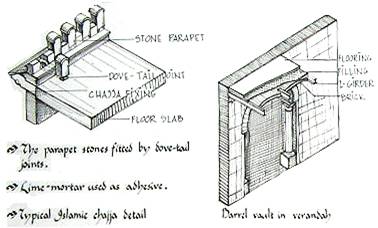
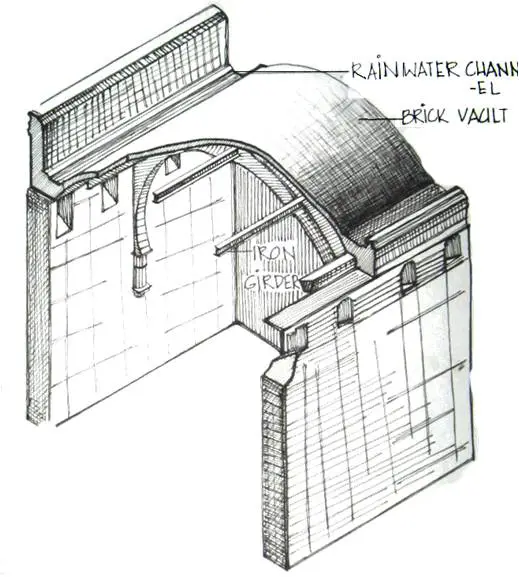
- The imposing minaret is built of cream colored sandstone, with marble and mosaic floors.
- The iron spiral staircase; the Islamic stone brackets; the rainwater disposal system.
European Plan Typologies

Oxford university
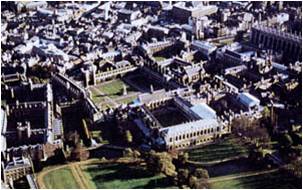
Cambridge university
The Plans establish routes, public squares. buildings and landscape within a cohesive framework to create a lively visual and social environment. They also concentrate activity in the core area of academic use but also incorporates quiet courts and landscaped areas for relaxation.
European Plan Typologies Adapted
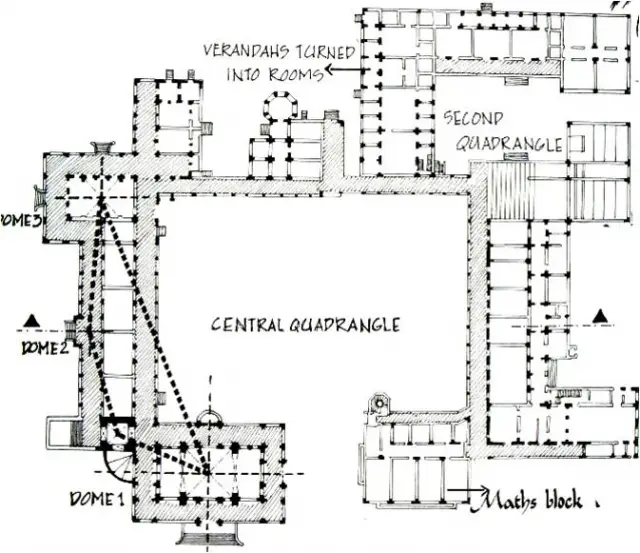
Verandahs added for shade and creating usable spaces suitable in an erratic
climatic condition
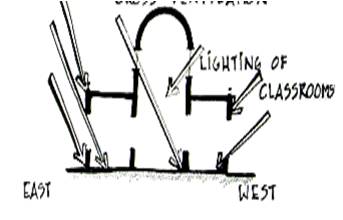
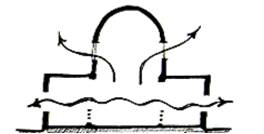
Ventilators for added circulation
The Converging Spiral
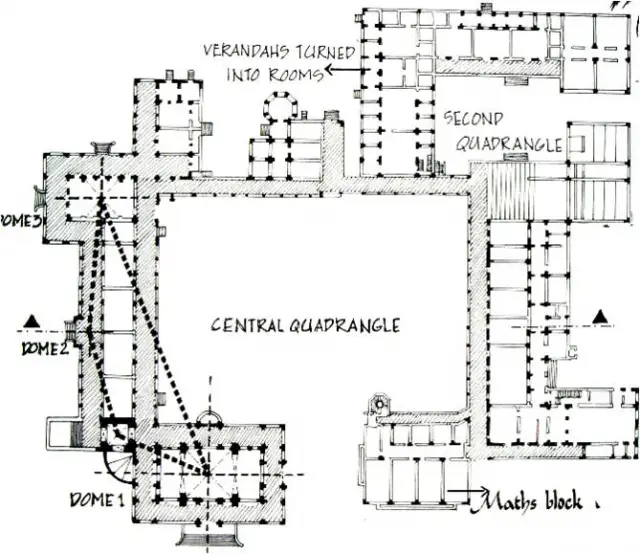
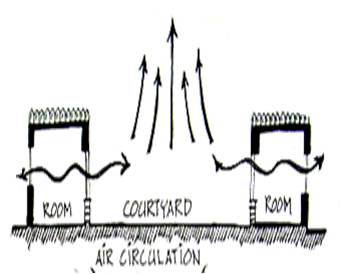
- The staircase reduces in diameter as it ascends upwards. There is a semicircular arcaded skin attached to the staircase.
- The weight of the staircase is carried by the circular central member.
- Until the first level, the stair case runs along the skin. However, on the upper one, the staircase converges and stands quite independent of the skin. A similar staircase is seen in Notre dome, Paris.
The Modular Plan
- Not a spontaneous but a deliberate attempt to amalgamate varied styles and reflects open mind to experimentation.
- Devoid of any kind of fetters the design reflects the complete understanding of the different architectural styles and context.
- Based on modular system based quadrangle given by Major Perkins. Has the flexibility of adding more quadrangles over time, a removal of the the chimney over the laboratory is seen.
The rooms are flanked by arches verandahs on both sides.
The Architect Speaks

- “The details show how the gothic tracery is blended with indian geometrical perforated stonework in windows and the cairean moucharabyeh woodwork., gothic shafts and the dome stands on a gothic mohammedan pendentives and semicircular arches, the open staircase is also a gothic feature.”
- “the beautiful lines of the taj mahal influenced me in my design of the dome over the hall and the indian four centered arch as convenient for my purpose, as well as working well with the general gothic feeling.”
- “i determined not to follow to closely the indian art, but to avail myself of an egyptian phase of moslem architecture and work it up with the saracenic style of beejapore and the north-west, combining whole in a western -gothic style.”
Deriving The Geometry
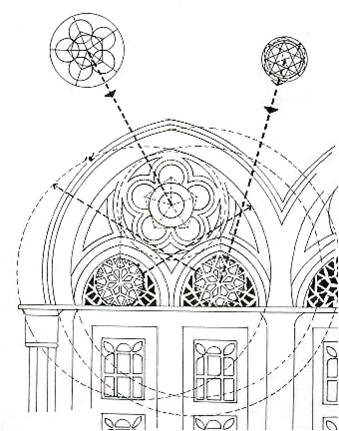
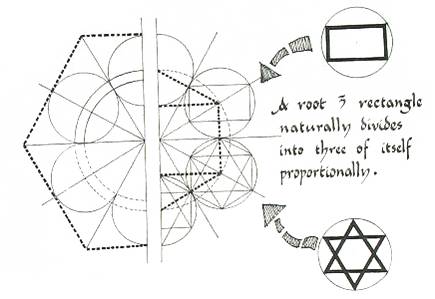
- Geometrical behavior of the rose window with Islamic jali.
- Basic construction of the rose window begins with the hexagon inscribed in a circle that is similar to the geometrical construction of the Islamic jali pattern.
- The Islamic jali pattern developed in the hexagon divides into circles which are micro cosmos of the complete rose window. The elevation boasts of certain balance and synergy. Analyzing its geometry one finds the length of the building and its minar in the ratio of 1.
- The architect has exhibited eclecticism not only in the ornamentation but also in the building system used.
- The room are seen vaulted with the gothic vaulted arches and corbelled Indian vaults. Thus exuding the much eclecticism seen in the structure. Barrel vaults are also seen in the structure.
BibliographyI:
- G.H.T. Tillotson MARG publication
- Thomas Metcalf An Imperial Vision
- Campus Thought News Letter-University of Allahabad
- The Gazetteer printed 1886
- Sabiha Foster Islam + Architecture- Architectural Design-Vol 74 (Nov/Dec)
- Persian Architecture A. U. Pope Printed 1965
- Sir Banister Fletcher History of Architecture
- Christopher Tadgell The History of Architecture in India

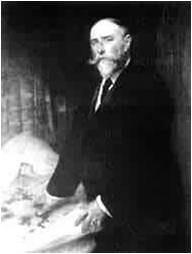
Leave a Reply
You must be logged in to post a comment.